Matador Network's Blog, page 539
January 24, 2022
Meet the people helping turn Reno into a bona fide street art destination

When visiting Reno, Nevada, one might expect a city kin to Las Vegas that’s full of bustling casinos, gambling, and headline resort performances. But if you get out and explore Reno, you’ll find there’s more than initially meets the eye – especially when it comes to public art.
There are more than 100 murals in Midtown Reno alone. You’ll find them everywhere: on the sides of local businesses, in alleyways, outside parking structures, and even on the floors of plazas. Both locals and city officials place tremendous value on the artists that help create such a vibrant scene.
Reno supports the artwork coming into the city through monetary investment. It uses a two percent room tax on hotels and casinos to commission new work, and the city buys pieces to display. The city’s annual ArtSignals program, for example, turns the city’s 50-plus signal boxes into canvases and pays artists $500 upon completion.
“The fact that funding comes from tourism is a valuable aspect,” says Megan Berner, public art manager for the City of Reno. “Not only because it increases the quality of life for the people living here, but it also draws people to want to come and experience this place because of those unique features,” Berner says.

Photo: Gchapel/Shutterstock
Reno is the closest city to fly into for Burning Man, but if you can’t afford a $400-plus ticket, you’ll find many of the festival’s most beloved pieces have been purchased and put on display by the city. Head to the city plaza to see the 12-foot tall “Believe” letters alongside the “Space Whale,” a giant 50-foot stained glass humpback whale. In Bicentennial Park, you’ll find “Portal of Evolution,” a metal sculpture by Bryan Tedrick first featured at Burning Man in 2009. It adorns flowers sprouted from its base, crowned by a butterfly that moves with the wind. With a second glance, however, there’s more to explore.
“It looks like a butterfly but it’s not a butterfly,” says Geralda Miller, executive director of Art Spot Reno. “It’s just kinetic and I love the movement of it with the wind blowing. I think that I love the fact that so many people don’t see it for what it really is. You know, they see a butterfly, when here it is it’s the female reproductive system. It’s wonderful how beauty is in the eye of the beholder there.”

Photo: Olivia Harden
Art Spot Reno is a nonprofit organization dedicated to promoting and providing information and education to artists and the Reno community. Suppose you’re looking for a way to see all of the art in the city – in that case, you can book a street art tour through the organization to not only see all of the fantastic murals and sculptures, but to learn the history of them from a dedicated “burner” and Reno local with such a deep breadth of knowledge about the community. The organization also hosts events like the Mural Expo, where local, national, and international artists come together to paint several walls in just a few days.

Photo: Right: Don Mammoser/Shutterstock. Left: Olivia Harden
An artist whose work you’ll find over and over again is local artist Erik Burke. He has worked all around the world over the past 20 or so years, with murals in countries like Korea and Italy and work published in places like the New York Times.. But with almost 100 murals across the entire city of Reno, there’s no place like Burke’s hometown to get acquainted with his portfolio. His earliest work in the city was graffiti, ambiguously signed OU with the mural’s number to avoid being caught. Stop by the northern wall of the Whitney Peak parking garage downtown to find OU/36 (post-graffiti era) – “Blueprint of a Mother.” The mural depicts Burke’s wife sprouting from behind Mount Whitney with a flower blooming inside.
“The first permissioned mural I painted in Reno was around 2004,” Burke tells me. “From that point, there were very few murals at all… and now it’s the hip cool thing, and a business that doesn’t have a mural feels left out. It’s creating so many more opportunities for myself and also all these other artists almost 20 years later now. I’ve seen the waves of it and I’ve seen a new generation of artists come up and then another new generation of artists come up underneath that, so it’s interesting to see it all grow and just help out the community.”

Photo: Hannah Eddy
There are so many different styles of murals and street art in Reno. Hannah Eddy describes her work as “urban, contemporary, playful, illustrative, with positive messaging.” Anthony Ortega takes a whimsical “psychedelic” approach. Travel along to the Riverwalk District and find one of several murals completed by Joe C. Rock, entitled “Fruit of Labor,” capturing his mother’s arm representing her strength and commitment to diversity, something you’ll often find in his other work.

Photo: Visit RenoTahoe
“What I want the public to take from my work is enjoyment first and foremost,” Rock says. “It’s supposed to be visually appealing and break up the monotony of another blank wall or advertisement. Secondly, the message – there usually is some kind of message or meaning to the work but I try not to force that on the viewer. I love to hear what people think of it because it changes from person to person and can mean many different things to different people.”

Photo: Olivia Harden
One of the things Miller said to my group during our tour is that sometimes she gets sad because a mural might be here today but gone the next. But I find that kind of exciting as a visitor. It means in Reno, there’s always something new to enjoy and appreciate. As the locals stay committed to bringing more art into the city, you never know what you’re going to see next. 
Sexual practices around the world

Whether you post selfies on Tinder, show off your cleavage with a push-up bra, or seriously commit to arm day at the gym and a fitness-based yoga routine, it all boils down to trying to impress your intended. And while the sexual revolution of the ‘60s loosened everyone up a little on matters of sex ideas, we Americans and Brits are still pretty uptight. We stress out over dating app bios, we’re disgusted by period sex, and we’re coy when it comes to open relationships. In short, we’re doing okay — but we have a long way to come.
Different cultures around the world have their own tastes and definitions of what’s normal, some of which have downright inspiring sex ideas. So broaden your horizons with these 10 sexual practices in different cultures from around the globe that remind us the world is a big, beautiful, open-minded place.
1. Mangaia, Cook Islands — the tribe with sex mentorsWhen a boy in the Mangaia tribe turns 13, he’s taken away from the village by an older man where, for the next two weeks, he’ll learn about all things sex. But rather being shown how to put a condom on a banana, he’ll be taught sex ideas and all kinds of lady-pleasing positions with, according to one journal, a “heavy focus on one’s partner achieving orgasm multiple times.” Female members of the tribe don’t follow a similar ritual, but they’re encouraged to fully explore their sexuality and have multiple sexual partners before marriage.
2. Brooklyn, US — where polyamory is on the riseSmall polyamorous communities are booming in countries within Europe, North America, and Oceania, but in Brooklyn, the practice of having multiple lovers has turned into a full-blown social scene.
The practice takes its roots from the ‘60s counterculture crowd that rejected traditional mainstream values and politics and set up sex-positive communes where everyone shared everything — including partners. Unlike their hippy forefathers, the poly crowd today has no issues with mainstream culture and is just as likely to be wearing the latest labels and grabbing a coffee from Starbucks as everyone else. That said, polyamory is still political: Practicers often value collective living and believe everyone should be able to act according to their own needs, free from government interference.
3. Chhattisgarh, India — the tribe that defines no-strings sexEvery year, the Muria tribe in Chhattisgarh, India, celebrates Ghotul, a festival where the local teens learn all about songs, dances, folklore, and sex. As soon as night falls, the girls drink natural liquor, which they believe helps prevent pregnancy, then head off to mixed-gender dormitories where they practice premarital sex, sometimes with a single partner and sometimes several. In some Ghotul, teens are paired off in monogamous relationships; in others, they’re discouraged from becoming emotionally attached to their partners, and those who sleep together for more than three nights are punished. The tribe is economically homogeneous and works as a collective, so if a girl accidentally gets pregnant, her baby is adopted by the whole village.
4. Cambodia — the tribe that builds its girls love hutsIn the US and UK, most parents insist their teenage daughters keep the bedroom door open when they have their boyfriend or girlfriend round. But in the northeast corner of Cambodia, parents don’t just let her close the door; they give her the whole house.
Moms and dads in the Kreung tribe used to build their daughters huts where they can acquaint themselves with any local boy who takes their fancy until they find the one they want to marry. Traditionally, the man would sit on the steps of the hut and woo his prospective partner with music. If she liked him, she’d invite him in, sometimes for a few nights, months, or even years, then they’d marry or part ways without judgment. Despite the progressive, liberal nature of the practice, misunderstanding fueled aggressive sexual behavior among outsiders, and after an attack on a young girl by a Khymer businessman in 2003, the tribes stopped building huts. Now, the country’s remaining love huts are only to be found in remote northeastern villages.
5. Niger — the wife-stealing tribeEvery year at the end of the rainy season, the Wodaabe tribe — an ancient group of nomadic cattle herders in Niger, West Africa — gathers together to celebrate Gerewol, a festival during which the men dress up in elaborate costumes and strut in a kind of beauty pageant. The aim is to impress or “steal” the wives of other men, who choose their favorites to sleep with.
White teeth and a straight nose are highly prized features, so the men wear lipstick to make their teeth appear bright and paint a white stripe down the center of their nose to make it look sharper. Women wait until their desired man passes by, then tap him on the shoulder. At sunset, the couple disappears into the undergrowth where they’ll spend the night together.
6. Alabama, US — the lesbian villageFounded in 1997, the Alapine Village is a female-only commune and takes its name from the lesbian communities founded throughout the ‘70s. Today, the rural village is home to a group of women who farm the land and host poetry readings, sing-a-longs, and “full moon circles” at night. They’re always looking for new members, so if you like the sound of living in a community based around female nurturing and support, then get in touch. Attendance is flexible and inclusive: Women enjoy a range of diets and live there full time, part-time, seasonally, or short term — so before you take the leap into commune living, you can always try it out for a week.
7. Iran — the temporary marriageIn Iran, they take the phrase “try before you buy” to a whole new level. The temporary marriage, or nikah mut’ah, is a traditional Islamic practice that unites a man and woman as husband and wife for a limited time. Historically it was used so that a fella could have a wife for a short while when traveling long distances, but now, some young Shia Muslim couples are using it as a way to get to know each other a little better before they tie the knot. According to the Oxford Dictionary of Islam, the length of the contract can be anything from three days to a whole year.
8. Yunnan and Sichuan, China — the realm of womenWomen of the Mosuo tribe don’t marry and take as many lovers as they want. There’s no word for “father” or “husband,” and lovers don’t live together. Instead, when a woman becomes of age, her mother gives her a key to her own dormitory. From then on, she can begin inviting lovers into her bedroom at night, This arrangement, which is known as a “walking marriage,” can be long-term or last as little as one night. When the couple wants to break up, either the woman stops letting her lover come over, or he just stops coming to see her. Although the tribe’s numbers are dwindling today, records of the Mosuo stretch back to at least 750 BC when the Chinese chronicles named their homeland as nu kuo, or “the realm of women.”
9. Himalayas, Nepal — where brothers share a wifeWhen a Himalayan son gets married, his family gifts him a portion of their land. But land is scarce on the mountain range, so poorer families who can’t divide their property encourage fraternal polyandry — where the family finds a wife for all the sons so they can live together and leave the estate intact. Once pervasive throughout Nepal’s Mustang region and India’s Ladakh, the practice is slowly dying out and is now limited to sheltered agricultural communities, such as those living in the remote Limi Valley.
10. India and Bangladesh — the community that drinks period bloodWhile periods remain very much a taboo topic around the world, the Bauls, a religious sect and wandering musical community in India and Bangladesh, celebrate a girl’s first period by mixing her menstrual blood with camphor, milk, and sugar. It’s then drunk by her family and friends.
The Bauls believe spiritual completion involves the “four moons” of menstrual blood, seed, urine, and feces. Women contain all of these, but men are lacking the blood moon, so they must ingest it. They can also absorb the missing moon via their penis during period sex. But this isn’t just any old quickie: It’s a ritualized event where the man must hold back on ejaculating while the women are encouraged to orgasm to energize their partner.
Sure, ingesting blood and indulging in period sex may not be everyone’s cup of tea, but the tribe’s positive attitude towards menstruation is inspiring, especially in a world that mostly views that time of the month as shameful or gross. 
January 21, 2022
Video: Harrowing rescue shows tourist pulled from 400-foot cliff edge in Hawai’i

In early January on the island of Hawai’i, a tourist decided that the view of Akaka falls wasn’t good enough from behind the protective fence. He climbed over, slipped, and found himself dangling near the edge of a 400-foot drop before a local man risked his own life to pull the fence jumper back to safety — and the life saving move was all caught on video.
Scenes from rescue were subsequently posted on TikTok. Commenters noted how the fence is there for a reason and were quick to point out the tourist’s blatant disregard for the consequences and whoever else might be injured. In the video, you can hear him bark orders at the people saving him, yelling “pull on somebody, please.”
In an interview with Dillon Ancheta from Hawaii News Now, the rescuer, Aldwin Francis, noted the man didn’t even say thank you after he pulled him back to solid ground. Though Francis gracefully added that, “for me, it’s good for him to be alive. That’s all that matters to me.”
@ellai This dude jumped over the fence to take a whole picture of Akaka falls 🤦♀️ ps. no one got hurt in this video #fyp #hawaiitiktok ♬ original sound – mela
There wasn’t much sympathy online when the video started making the rounds. Commenters in the r/Hawaii subreddit reacted with opinions ranging from “this is why we can’t have nice things,” to noting how “the entitlement even when being saved” was mind blowing, to stating that “as soon as he gave me that condescending tone, I would be back up over the fence.” Another person put some extra perspective with the comment “this stranger is putting himself in danger because Chad needed to go and flex on nature.”
Hawai’i has long had a problem with tourists who think they know better than the safety warnings. From 2012 to 2016, 147 tourists (about one a week on average) died from swimming, snorkeling, hiking, and scenic driving injuries, Civil Beat writes. In November of 2021, local Hawai’ian Camille Leihulu called out tourists on TikTok who hiked the Haiku Stairs in Oahu, which have been closed since 1987.
On the video, Leihulu wrote: “Why do outsiders get to blatantly ignore laws and rules and do as they please without facing any repercussions or acknowledging the consequences that Hawaiians have to deal with as a result of their actions?”
There are plenty of great outdoor experiences to have on all of Hawai’i’s islands, so long as you realize guidelines are guidelines.
Perhaps Francis said it best in his Hawaii News Now interview: “Abide with the rules. There’s a fence for a reason.”
More like thisBeaches and IslandsThe best outdoors experience to have on each Hawaiian islandThese countries will require a COVID-19 booster shot to get in
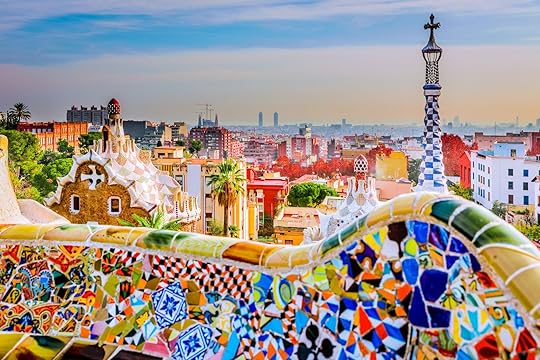
If you were first in line to get your COVID-19 vaccination, you’d better also be eager to receive a booster shot. The Omicron variant is putting the current COVID-19 vaccine through a tough test and some countries are already thinking beyond the first two shots by requiring booster shots from international travelers.
Croatia is one of the first country to have set a booster shot requirement for international travelers. The Balkan nations asks that travelers provide a “certificate not older than 365 days of receipt of two doses of vaccine used in EU Member States (Pfizer, Moderna, AstaZeneca, Gamaleya, Sinopharm) or vaccines approved by the World Health Organization for emergency use (Serum Institute of India — Covishield, Bharat Biotech — Covaxin, Sinovac — CoronaVac) or presentation of a certificate not older than 365 days of receipt one dose of vaccine received in one dose (Janssen / Johnson & Johnson) if 14 days have passed since receiving that one dose,” according to the Croatian government website.
That means in Croatia, your vaccine card is only valid for 12 months before you’re expected to receive a booster shot.
Similarly, Austria has toughened up its entry requirement for those who are vaccinated. While fully-vaccinated travelers are allowed to enter Austria upon presentation of the negative results of a PCR test, and proof of past infection or proof of full vaccination, the country’s Official Travel Portal explains that “Two-dose vaccinations are currently valid for 270 days after the second or any additional dose.” After the 270th day, a booster shot will be needed to enter Austria.
Note that all those who have received a booster shot do not need to provide a PCR test to enter Austria.
Spain is the lastest country in Europe to require travelers have received a booster shot to enter. Spain’s Official Tourism Website states that “As of February 1, 2022, keep in mind that you will need 14 days from the last dose [of the COVID-19 vaccine] at least and no more than 270 days since the date of administration of your last dose. From that moment on, your vaccination certificate must show the administration of your booster dose.” Spain only accepts travelers who have received the following vaccines: Pfizer-Biontech, Moderna, Astra-Zeneca, Jansen/Johnson & Johnson, Sinovac and Sinopharm. 
12 destinations that inspired the world’s most famous writers

Books have the ability to transport us to faraway places, whether fantasy lands or far-flung corners of the globe. Fictionalized or not, the settings for much of the greatest literature ever written were inspired by the real-life experiences of their authors, from tributes to their hometowns to meditations on their travels. It’s a special thing to be able to see the world through the eyes of masterful writers. These are the places that inspired the classics, from the books we read as kids to the ones that earned their authors Nobel Prizes. May they become literary travel destinations for all the book lovers.
1. Prince Edward Island, Canada
Photo: Vadim.Petrov/Shutterstock
The name L.M. Montgomery may or may not ring a bell, but the author’s enduring Anne of Gables children’s series probably does. The series follows Anne Shirley, a precocious, red-headed orphan from Nova Scotia who’s sent to live in Avonlea, a fictional town on Prince Edward Island that was modeled after Cavendish, the summer resort where Montgomery grew up. Reading the series, it’s clear how much the author’s hometown stoked her imagination, from the farm that inspired Green Gables to the Haunted Wood and Lover’s Lane in Balsam Hollow.
2. Tangier, Morocco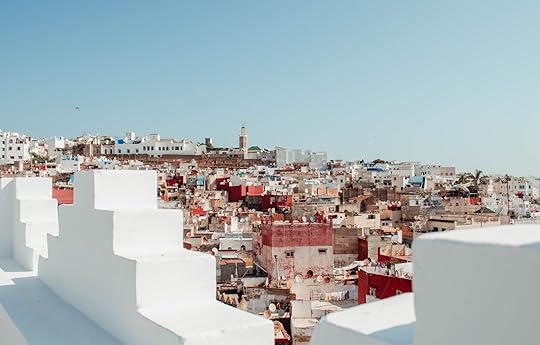
Photo: Jose y yo Estudio/Shutterstock
Between 1924 and 1956, Tangier was home to an international zone that attracted a host of European and American artists and expats. The Naked Lunch by William S. Burroughs famously encapsulates the city at that moment in time. A defining work of the Beat Generation, the novel is a hedonistic romp through the Interzone, written by an author who once called Tangier “one of the few places left in the world where, so long as you don’t proceed to robbery, violence, or some form of crude, antisocial behaviour, you can do exactly what you want.”
3. Dublin, Ireland
Photo: Madrugada Verde/Shutterstock
Quite a few of the world’s most famous writers hailed from Ireland: Oscar Wilde, Samuel Beckett, and William Butler Yeats to name a few. Many of these writers cut their teeth in Dublin. None captured the Irish capital as faithfully as James Joyce. Though he spent most of his adult life in Trieste, Italy, Joyce was born in Dublin in 1882 and chose it as the setting for both of his famous tomes, Ulysses and Finnegans Wake. Yet his greatest tribute to the city has to be Dubliners, a short story collection centered on 20th-century Irish middle-class life.
4. Kenya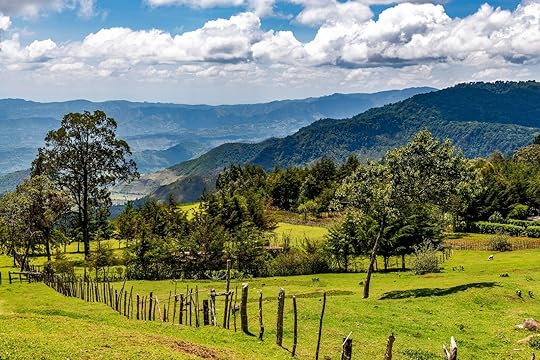
Photo: Jen Watson/Shutterstock
In 1937 Danish author Karen Blixen, pen name Isak Dinesen, published a memoir recounting her life on a coffee plantation in what was then called British East Africa. Depicting both the natural landscape and the characters and customs she came to know during her nearly two decades in Kenya, Out of Africa examines Blixen’s role as a European colonizer in the dying days of East Africa’s British colonial rule, parallel to the trials and tribulations of her personal life.
5. Pamplona, Spain
Photo: Ion Maran/Shutterstock
It’s hard to nominate a single destination that most inspired Ernest Hemingway. His travels through Europe, Africa, and the Caribbean all had an indelible impact on his work. But you can’t talk about Hemingway without mentioning The Sun Also Rises, a modernist classic that begins in Paris, moves to Pamplona, and ends in Madrid. Of all the novel’s events, the bullfighting scenes in Pamplona are among the most memorable, not only as an account of one of the city’s most iconic traditions but also as an ongoing metaphor for masculinity, sex, and love.
6. Puerto Rico
Photo: shorex.koss/Shutterstock
You might think Fear and Loathing in Las Vegas is the Hunter S. Thompson novel with the greatest sense of place, but one could argue that superlative belongs to The Rum Diary. Kentucky-born Thompson penned The Rum Diary after moving to Puerto Rico to work as a sports writer at an ill-fated English weekly. The novel is based on his experiences in the Puerto Rican capital, which at one point he describes through the “sounds of a San Juan night … sounds of life and movement, people getting ready and people giving up, the sound of hope and the sound of hanging on, and behind them all, the quiet, deadly ticking of a thousand hungry clocks, the lonely sound of time passing in the long Caribbean night.”
7. Mumbai, India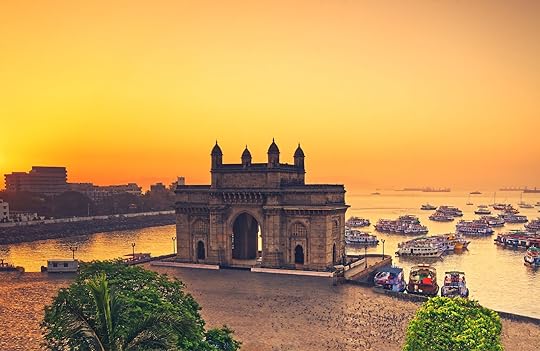
Photo: Gilberto Souza/Shutterstock
New Delhi is India’s capital city, Calcutta is its cultural capital, but it’s Mumbai that’s inspired some of the greatest literature of all time. Jungle Book author Rudyard Kipling was born there, for one, as was Booker Prize-winning Salman Rushdie, both of whom featured the city in various writings. A more recent bestseller set in Mumbai was Shantaram: A Novel by Gregory David Roberts, which tells the semi-autobiographical tale of an Australian prison escapee who flees to the city in the late 1980s and becomes embroiled in its tempestuous underbelly.
8. Trinidad
Photo: Christian_Schmidt/Shutterstock
Though it’s unclear where Robinson Crusoe was supposedly set, many identify Trinidad as the island that inspired Daniel Defoe’s 18th-century castaway tale. Others claim it was the largest of the Juan Fernandez islands off the coast of Chile that Defoe was inadvertently describing, so much so that the landmass has been renamed Robinson Crusoe Island from Más a Tierra. Yet Trinidad has a second notable literary heritage. Nobel Prize-winning V.S. Naipaul, a Trinidad-born British writer, used his birthplace as the backdrop for many of his early works, as well as the first of his novels to gain worldwide recognition, A House for Mr. Biswas.
9. Snæfellsjökull Peninsula, Iceland
Photo: Gloria Martie/Shutterstock
Despite never visiting Iceland, French science fiction author Jules Verne was so captivated by its otherworldly landscapes that he fancied the Snæfellsjökull stratovolcano, about 125 miles northwest of Reykjavík, to be the gateway to the earth’s core in the 1864 classic Journey to the Center of the Earth. Known for setting his novels in extreme places, Verne would go on to publish Twenty Thousand Leagues Under the Sea in 1870 and Around the World in Eighty Days, which takes readers to 11 countries across the globe, in 1872.
10. Cartagena, Colombia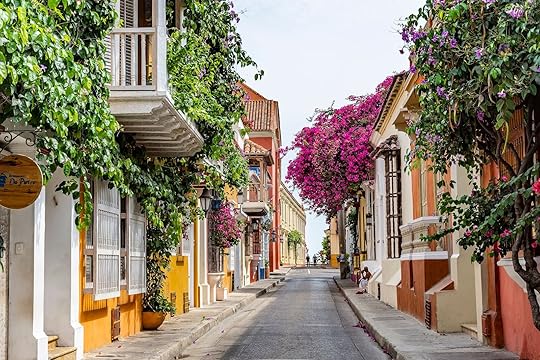
Photo: WILLIAM RG/Shutterstock
Gabriel García Márquez, the Nobel Prize-winning author of One Hundred Years of Solitude and Love in the Time of Cholera, is known for two things: being the father of magical realism, Latin America’s most famous literary genre, and committing to the page some of the most intimate accounts of Cartagena ever written, explicitly or otherwise. The Colombian author was born in Aracataca roughly five hours east of Cartagena, where he eventually moved, became enthralled, and about which he was later quoted as saying: “All of my books have loose threads of Cartagena in them. And, with time, when I have to call up memories, I always bring back an incident from Cartagena, a place in Cartagena, a character in Cartagena.”
11. Naples, Italy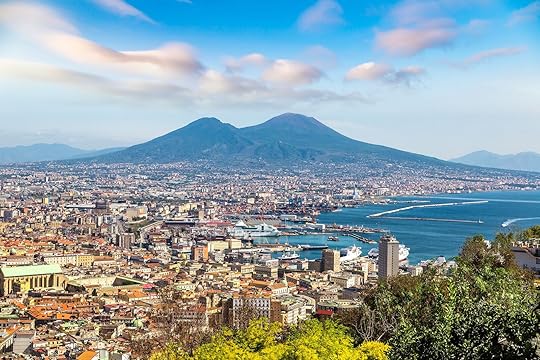
Photo: S-F/Shutterstock
Elena Ferrante’s Neapolitan Novels were a breakout hit of the 2010s. The series, beginning with My Brilliant Friend, chronicles the friendship between two 20th-century Italian women, from their postwar childhood in Naples to their respective adulthoods. Despite her depiction of Naples as a poor, gritty, and stifling city in those days, the elegance with which Ferrante writes about her hometown tells readers everything they need to know about how inspirational it can be.
12. United States
Photo: Gary C. Tognoni/Shutterstock
It seems flippant to include the whole of the United States on a list of literary travel destinations, but even more than a single region, there’s a particular type of novelized travelogue that deserves a mention: the great American road trip. Jack Kerouac’s On the Road is an obvious example. Vladimir Nabokov’s Lolita is another. Though much of the discourse involving the latter centers on the predatory relationship between the protagonist and his prepubescent neighbor, who spend much of the novel crisscrossing the country, one could argue that the only love story portrayed is that of the Russian author and the United States, of which Nabokov became a citizen in 1945, a decade before Lolita was published. 
Your next road trip could be in futuristic electric RVs and Airstream trailers
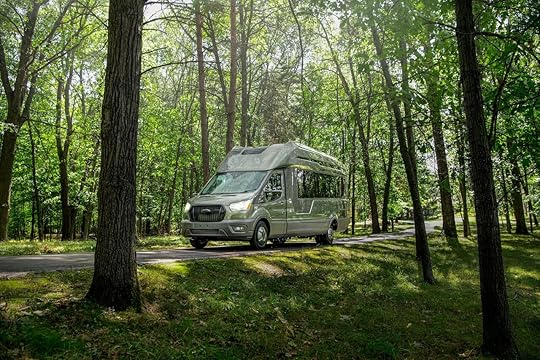
The Florida RV SuperShow is a highly anticipated, if normally predictable, annual event. Each year, RV makers promote new models and features, travel companies hawk everything from gear to camping passes, and recreational vehicle enthusiasts from around the country gather for a few days of frenzied four-wheel revelry.
The 2022 edition of the show, underway now at the Florida State Fairgrounds in East Lake-Orient Park, has already been an anomaly.
Specifically, it’s offering what leading RV manufacturer THOR Motor Coach calls a “look into the future.” At the show, THOR released two prototype concepts for all-electric RVs. These models, built in partnership with automotive company Roush, represent a coming major shift in one of the most popular ways to travel in the US: via RV. Personal electric vehicles from brands like Tesla and Ford are popular with consumers, but the recreational vehicle industry is just beginning to play catch-up.
“We’ve been focused on an electrification ‘eMobility’ strategy for a number of years and have made substantial progress on our journey,” said Bob Martin, THOR’s CEO, adding that the company has “harnessed emerging technology and co-developed flexible, scalable, and customizable platforms on which our family of companies will build distinct products.”
The primary electric RV concept is dubbed the Thor Vision Vehicle (TVV). The RV will go 300 miles on a single charge, a distance the company notes is within the typical daily driving range of most RV users. The caravan looks like something out of 2001: A Space Odyssey — perhaps appropriate given the whole ‘futuristic’ moniker of the RV design.
This is the Climate Win, the most positive sustainability news around the world every week.

Photo: Courtesy of THOR
The model that particularly caught Matador’s attention, though, is what’s being dubbed the eStream — an electric AirStream trailer. It’s a typical tow-behind, but built on THOR’s new electric chassis, which the brand claims will drastically reduce the miles-per-gallon drag when towed by gas-powered vehicles. You’ll get even better mileage if you tow with an electric vehicle. The chassis/RV combo is designed to minimize strain on the vehicle’s engine, requiring less power to pull than other tow-behind trailers.
No set release date or price point has been announced for the electric RVs. But if THOR manages to get them to market in the next couple of years, that could land them the honorable title of first American-made, fully-electric caravan RV on the market. Winnebago has also announced an electric caravan concept, intended to push forward innovation in the caravan market following the brand’s recent foray into the electric #vanlife. Zeus Electric and SylvanSport also recently announced they had teamed up to produce an electric RV. The Iridium RV, an electric option from German manufacturers ElektroFahrzeuge Stuttgart and WOF, was the world’s first electric RV when it debuted in 2019.
Regardless of who gets there next, you could be touring the country in an electric RV within the next few years. Sign up via THOR’s website to stay up-to-date on the release of these forthcoming electric RVs.
More climate wins this week: banking for good, and easy access to solar powerClimate First Bank, a sustainability-minded and carbon-neutral bank based in Florida, partnered with the United Nations’ Net-Zero Banking Alliance, according to Yahoo! Finance. It is the first US-based bank to do so, representing the start of eco-friendly banking in America. Travelers from all over the country can open accounts remotely at the bank. Normally, a bank invests the money users have in their accounts in profitable businesses, thus making money for the bank. However, there’s no telling if those businesses are earth-friendly. Members of the Net-Zero Banking Alliance commit to lending and investing only with companies meeting or working toward net-zero carbon emissions..
In China — the world’s top emitter of carbon emission — renewable energy will provide 70 percent of its new power needs over the next three years, according to a report in the South China Morning Post. The International Energy Agency made the projection based on the country’s rapid growth in wind and solar power.
Speaking of solar power, it’s about to get much easier for small devices– think smartwatches and off-grid tools — to run on solar power. A study published in the journal Nature Communications released information on the development of tiny solar panels and batteries developed at Stanford that are thin and durable enough to indefinitely power small electronic devices (provided it’s sunny, of course). So here’s to hoping the next generation of backcountry ski avalanche beacons are solar powered, using the battery only as a backup. 
This European country has 6,000 grizzly bears. Here’s where to see them up close
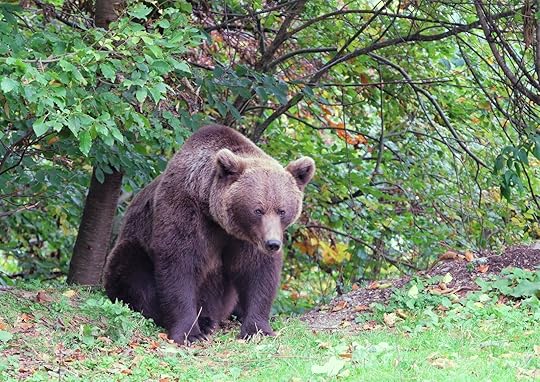
I stopped the van next to the road to stretch my legs when I saw it. There was a brown bear, sitting roughly 60 feet from me. I couldn’t believe my eyes at first, but after a few seconds, I realized the moment was real. The animal had fluffy round ears and looked cute enough to hug, but the sight of the huge claws and teeth when it yawned got me back in my car. I continued on my way and left it in peace.
I was driving the Transfăgărășan, which is, according to Top Gear, “the best road in the world.” It truly is spectacular, containing numerous hairpin bends and magnificent views of the road below that make you feel like you’re on a racetrack. It runs through the yellow mountains, though they looked almost golden in the October sun.
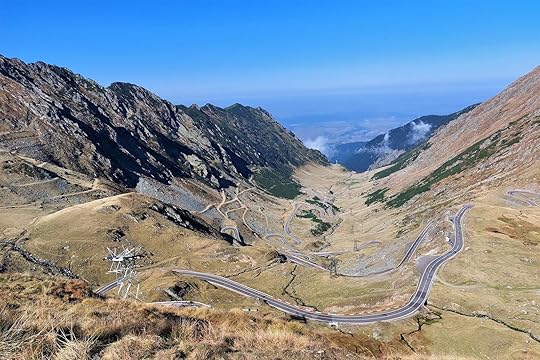
Photo: Mayra Blömer
In the summer of 2021, I started traveling Europe with my boyfriend. We’re planning to spend the next year or so living in our van we converted — Ruby — and have been traveling around Europe already for several months. We started in the Netherlands, but last fall brought us to Romania, where we spent for all of October. Our primary goal for visiting was to drive the famous Transfăgărășan, though wildlife was also a major draw.
Romania is somewhat famous for its brown bears, which are the same species as grizzly bears. In fact, bears in Romania have made headlines, most recently for chasing a skier down a ski slope and a few recent bear attacks. However, bears don’t naturally see humans as a food source, and any association they have between food and humans is almost always a result of poor behavior from people (like leaving food out or encroaching too closely to dens).
Bears along the Transfăgărășan and near Piatra Craiului National Park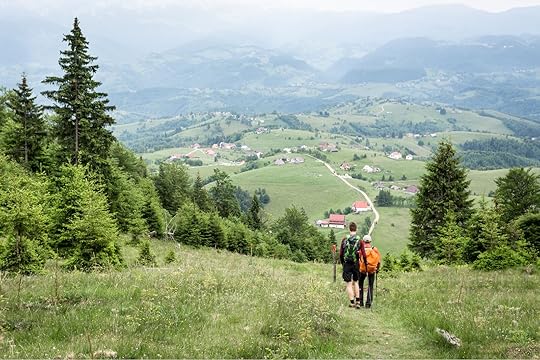
Photo: Olimpia210/Shutterstock
The country has 14 national parks, but the most well-known for spotting bears in Romania (and perhaps the most well-known overall) is Piatra Craiului National Park, a 90,000-acre park in the Carpathian Mountains. It has dozens of hiking trails and plenty of cabins, hotels, and backcountry shelters in the surrounding towns and woods. It’s popular for both day hiking and overnight trips and connects to the parts of the Carpathian mountain range that spread into other countries like the Czech Republic, Serbia, and Ukraine. It’s one of Europe’s most well-known parks for wildlife and outdoor getaways.
The park is a short drive from the town of Brașov, a medieval town surrounded by forested mountains. The small city is lively and frequently welcomes tourists, but it hasn’t lost its traditional atmosphere. It’s partially surrounded by ancient walls and the city center is a huge town square framed by terraces and restaurants. The town has cute shops and small restaurants, making it a great place to stay for a few days. Many tours through the park leave from Brașov, and it’s only 2.5 hours by train from Bucharest, Romania’s capital.
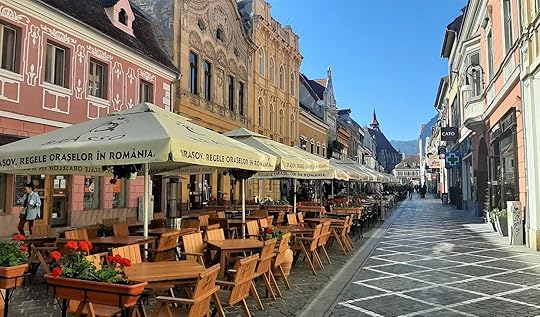
Photo: Mayra Blömer
There are many brown bears in the mountains of the park, but as far as roads go, the Transfăgărășan is especially known for bear sightings. After my first encounter with the cute bear, I even saw two more, lurking with curious eyes from the side of the road.
Brașov Bear Sanctuary
Photo: Mayra Blömer
Romania is known for bears, and these weren’t the first I had seen. But my first bear sightings were in the Libearty Bear Sanctuary — the biggest brown bear sanctuary in the world — near Brașov, a small city in central Romania. The animals were once tourist attractions, living in small cages at restaurants, monasteries, gas stations, and circuses throughout the country. But they’ve since been rescued, and all 111 bears can roam freely across the sanctuary’s 170 acres.
The bears that didn’t come from tourist stops came from the wild, where aggressive behavior toward humans meant they had to be moved to a sanctuary, or killed. But when humans leave food out, bears will start to approach humans, which leads to dangerous encounters. This ultimately results in an unfavorable outcome: the bear has to be killed or sent to a closed-in area. It’s likely the bears I saw on the side of the road were also looking for a handout from humans.
This is a great place to see bears in Romania. Visits are heavy on wildlife education, and it’s definitely not a zoo. Visiting hours are limited and tours — which run only four days a week during an hour in the morning — are mandatory. The odds of seeing the bears are high as they’re usually fed soon after the tour, so they congregate near the feeding areas. The sanctuary limits the number of guests allowed each week and tries to find the balance between limiting human interaction and bringing in enough income from ticket sales to keep the animals healthy and cared for.
Camping in the wild in Romania
Photo: Mayra Blömer
Romania is a wild place with mostly undeveloped forest, and estimates suggest that grizzly bears in Romania number around 5,000 to 6,000 — that’s more than any other country in Europe. (Russia, Canada, and the United States have the largest populations.) So while that certainly give you a chance of seeing them near roadways, as I did, the most likely bear sightings will be deeper into the woods and mountains.
Fortunately, in Romania, you can camp almost anywhere outdoors freely without permits or reservations, except for in national parks, nature reserves, private land, towns, and beaches. Vans and campers are popular, as sleeping in a tent may ever-so-slightly increase your odds of an unwanted animal encounter. And it’s not just bears in Romania’s forests — you could also see wolves, lynx, and wild boars.
Romania is gorgeous, with fairytale-like camping spots in the wood. You can camp surrounded by huge firs, near the riverbanks of a rippling stream, or on a summit with magnificent views of misty mountains. Head to the Fagaras Mountains (the section of the Carpathian mountains in Romania) for endless camping and hiking trails, or visit Bucegi Natural Park. While you technically aren’t supposed to backpack in the park, many people do, though the proper way to do it would be to rent a campsite at the nearby Camping Zănoaga (which also rents tents and camp gear).
If you’re an international traveler, you’ll likely fly into Bucharest and need to rent a car. Since camping is so popular in Romania, plenty of campervan rentals are available around Bucharest, and renting vans is generally the most popular way for foreign visitors to camp. Renting one will allow you to safely park and camp just about anywhere you want without needing much gear.

Photo: Mayra Blömer
If you do choose to wild camp, be aware that poverty is a major issue in Romania. During my visit, I had multiple strangers press themselves against my van, asking for items and money as I passed through. It never gets particularly easy, especially when driving through small villages of lean-tos and handmade homes.
Tips for traveling in Romania’s wilderness:
Photo: Mayra Blömer
Roads: The roads in mountain areas are steep and sharp. The meandering routes mean traffic limited to something around 30 miles per hour. Only the biggest cities have double-lane highways. If you’re not in too much of a hurry, these slow drives are fantastic and lead you through magnificent landscapes. It’s not uncommon to see horses with wagons on the roads, transporting everything from people and animals to logs. Along the roads, you’ll also see lots of stray dogs running and barking at cars, so be sure not to speed. And on Sunday mornings, expect roads near towns to be full of locals coming and going from Orthodox church services, dressed in their best clothes and walking in large groups.
Roadside eats: Occasionally, you’ll see small stalls selling inexpensive home-grown fruits and vegetables near the road. Larger ones will also sell homemade products like jam, honey, cheese, and alcoholic drinks. They’ll usually let you try the beverages, displayed in used plastic bottles. Most common are red wines and several kinds of Palinka, a liquor made with pears, apples, plums, or any other kind of fruit.
Another treat worth buying, if you find it, is my now-favorite dessert: Papanași, similar to a cheese donut. The Romanian sweet treat consists of fried dough with cheese, topped with sour cream cheese and blueberry sauce — just delicious.

Photo: Mayra Blömer
Haystacks: Common in Romania are pyramid-shaped haystacks. Farmers use them to stack their hay in a special way that prevents rotting and keeps the hay safe to eat for cattle through the winter. When you see them, look for the small space beneath the stacks, where its said secret lovers and AWOL soldiers used to hide. In the case of the lovers, suspicious fathers would supposedly put a pitchfork through the haystack, leaving a mark on the young gentleman inside that would later give him away.

Photo: Mayra Blömer
The weather: I visited in October, which I would recommend if you like brisk colors and foliage. It’s mostly dry with pleasant temperatures around 50 degrees Fahrenheit during the day. Romania has a continental climate, so summers are quite hot — July can be in the upper 80 degrees Fahrenheit — and winter is snowy, especially in the mountains. Regardless of when you camp, you’ll want long pants and an insulated jacket for the evenings if you’re in the mountains. If you’re tent camping, be sure your rainfly is waterproof. 
The best Texas Airbnbs to experience Lone Star culture
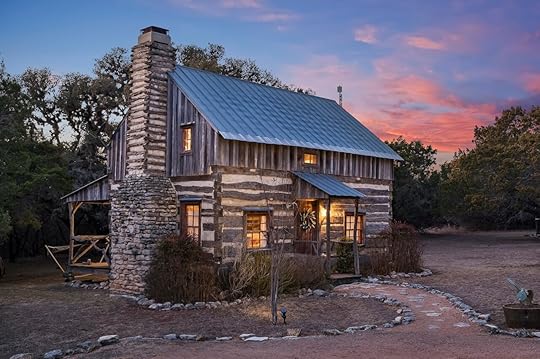
The lone Star state is known for the iconic line “everything is bigger in Texas.” Whether that’s true or not, Texas is known for many other things like BBQ, the live music capital of the world (check out these Austin Airbnbs), and unimitable culture. Whether you go to Texas to experience cities like San Antonio or Houston and beach areas like Corpus Christi or to visit small iconic towns in Texas Hill Country, there is a Texas Airbnb for your trip. Here are the best Airbnbs in Texas that capture the essence of the state.
Top Texas Airbnbs in San AntonioTop Texas Airbnbs in HoustonTop Airbnbs in Texas Hill CountryTop Corpus Christi AirbnbsTop Galveston AirbnbsTop El Paso AirbnbsWe hope you love the best Airbnbs in Texas we recommend! Just so you know, Matador may collect a small commission from the links on this page if you decide to book a stay. Listed prices are accurate as of the time of publication. See our full Advertiser Disclosure here.
Top Texas Airbnbs in San AntonioHistoric 1950s family home with pool
Photo: Airbnb

Photo: Airbnb
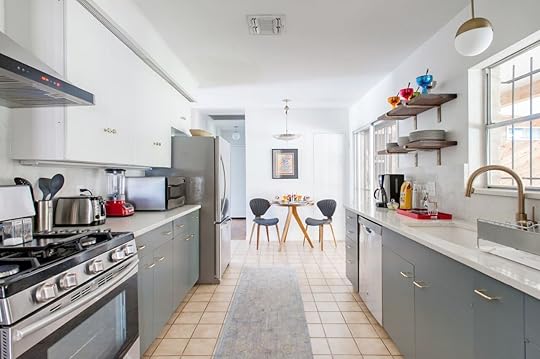
Photo: Airbnb

Photo: Airbnb
This sophisticated, charming 1950s family home is a perfect setting for a getaway filled with fun and relaxation. The home has three bedrooms and three full bathrooms, a fully equipped kitchen, a family space, a shared space, and an office/study if you need to get a little work done. If there are days when you may want to stay in, there is a spacious patio area with a massive pool for some fun in the sun.
Eight guests, three bedrooms
Price: $390 per night

Photo: Airbnb

Photo: Airbnb

Photo: Airbnb

Photo: Airbnb
This home was built in 1907 and now has renovated modern touches with a mixture of historical features. The house is located in the city’s historic King Williams neighborhood, less than one mile from downtown. There are guest suites in the home, and in the back house, five additional people can crash out. Guests can relax on the front porch and the backyard to sit and enjoy a drink.
Ten guests, three bedrooms
Price: $382 per night
Check out our full guide to the best San Antonio Airbnbs.
Top Texas Airbnbs in HoustonJungle oasis with spacious outside entertainment area
Photo: Airbnb

Photo: Airbnb

Photo: Airbnb

Photo: Airbnb
Just as it states in the home, this jungle oasis gives off nothing but good vibes. Once you enter this home, you have entered the dimension of relaxation and positive vibrations. The townhouse has a large open floor plan with a living room and a fully equipped kitchen with a double oven and dining area to seat up to eight people. The upstairs level has three bedrooms and three bathrooms. The downstairs open floor plan also leads to the spacious outdoor patio area, which doubles as an entertaining space with a hot tub and seating area with a TV to watch movies.
Fourteen guests, three bedrooms
Price: $325 per night

Photo: Airbnb

Photo: Airbnb

Photo: Airbnb
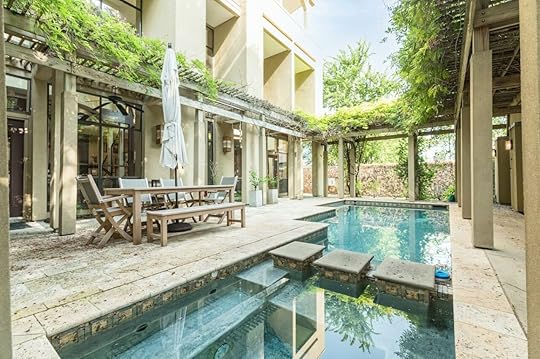
Photo: Airbnb
If you want to have a true texas gateway in style, this stunning architectural home is just for you. The house is in its own space, giving guests all the privacy they need and feeling luxurious at the same time. This luxury home has a spacious living room with floor-to-ceiling windows and a huge kitchen and dining area. There is also a private pool in the backyard that looks like a garden oasis and a private second-story balcony.
Six guests, three bedrooms
Price: $378 per night

Photo: Airbnb

Photo: Airbnb

Photo: Airbnb
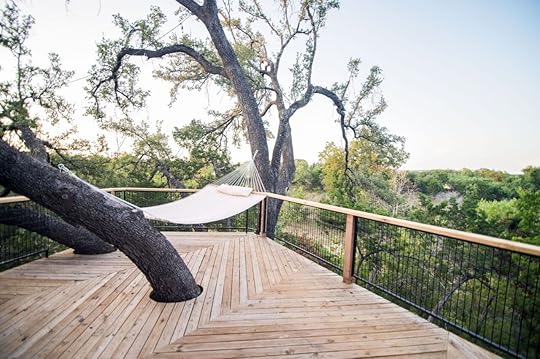
Photo: Airbnb
Experience this luxury treehouse as your next couples or singles getaway. Immerse yourself in nature by staying at this treehouse and experiencing relaxation at its finest. Hang out on the hammocks or the living room sofa and hear the birds chirping right in front of you. Or wind down in the private candle-lit outdoor bathtub with beautiful views of what nature has to offer.
Two guests, one bedroom
Price: $299 per night

Photo: Airbnb

Photo: Airbnb

Photo: Airbnb
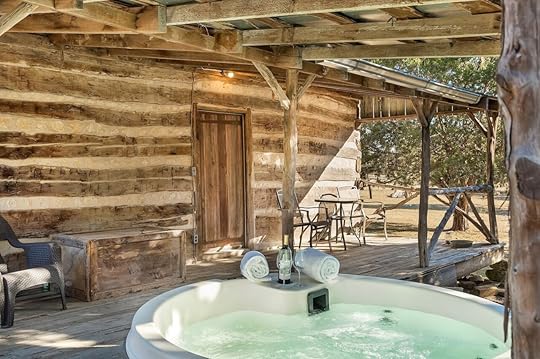
Photo: Airbnb
Enjoy this privately located home that’s on seven and a half acres of pure beauty. This cabin gives guests the privacy and the peace to enjoy what Texas Hill County offers. With exposed rock walls and wood beam ceilings in the living room, it gives off a unique, authentic Texas charm and the rustic decor and vibes in the kitchen. There is a spacious and beautiful backyard area with a charcoal grill and a picnic table under the trees and the chance to experience sightings of Axis and Whitetail Deer in the mornings or evenings.
Two guests, one bedroom
Price: $315 per night

Photo: Airbnb

Photo: Airbnb

Photo: Airbnb

Photo: Airbnb
Enjoy this beachside paradise with a gorgeous view of the Gulf of Mexico. This two-story penthouse was renovated and includes a full kitchen with granite countertops, a breakfast bar, barstools, and a pantry for storage. The spacious living room area showcases the beautiful water views and the balcony area where guests can sit out and enjoy the salty air. This Corpus Christi Airbnb is as close as the mainland gets to tropical island life — and as you’ll experience, the beach jams and fruity cocktails are pretty darn good here.
Eight guests, two bedrooms
Price: $442 per night

Photo: Airbnb

Photo: Airbnb

Photo: Airbnb

Photo: Airbnb
This newly built residence is just three blocks from the beach. This 1300 square foot home has everything you need and more for a beach vacation. Guests are welcomed by a vast open floor plan with a living room with windows that show beautiful sunrise and sunset views. A chef-style kitchen packed with all appliances needed to have a gourmet dining experience. The stairs will lead to a spacious front patio with views for days, and the home also features backyard space with a stunning pool with waterfall, outdoor living space, bar and barstools, grill, and prep area.
Ten guests, four bedrooms
Price: $189 per night

Photo: Airbnb

Photo: Airbnb

Photo: Airbnb

Photo: Airbnb
This four-bedroom two-bath home is the perfect place to host the next family reunion or friend vacation. This tropical palace has a spacious living room, kitchen, and dining area. There is also a front deck where you can relax, enjoy the breeze and listen to the sound of the ocean that is only three minutes away from the house.
Fourteen guests, four bedrooms
Price: $315 per night

Photo: Airbnb

Photo: Airbnb

Photo: Airbnb

Photo: Airbnb
Who doesn’t want a front-row seat of a beautiful ocean view? This modern apartment gives you just that with stunning panoramic views of the beach. This remolded apartment has a fully equipped kitchen with new appliances and granite countertops. You’ll enjoy sitting over a coffee (or a beer, who’s kidding?) on the patio as the waves crash into the shore. They say Texas is all about that ranch life, but this Galveston Airbnb is proof that Texas is all about that beach life, too — and that it’s just as good here as anywhere.
Six guests, two bedrooms
Price: $206 per night

Photo: Airbnb

Photo: Airbnb

Photo: Airbnb

Photo: Airbnb
Once you enter this arcade sanctuary, you will never want to leave. Whether you’re taking a family, friends, or solo trip, this arcade oasis will help you unwind (with games). The home features a spacious living room with one side as a seating area with tv and the other side with its set up of arcade games and decorative Pacman wall art. There is also a backyard with a patio, picnic tables, additional seating areas, a grill, and a TV if you want to relax and unwind outside. This space is pet-friendly, and there is a second backyard specifically for pets. 
Ten guests, three bedrooms
Price: $165 per night
The boners of Bhutan

You’ll see them on doors, houses, and even temples throughout the kingdom — extravagant artworks depicting the human penis in all its masculine glory. Some are so crudely drawn they’d be mistaken for vandalism in a less enlightened place. Others are rendered in exquisite detail, complete with hair (yes, hair), eyes (yes, eyes) and spurting white stuff (yes, that too).

The phallic symbols range from crude drawings to ornate artwork. Photo: Author.
These are everyday symbols in Bhutan, a bastion of the Vajrayana branch of tantric Buddhism. Tucked amidst the jagged mountains of the Himalayas, this kingdom has for centuries lived in isolation from the rest of the world. So secluded is the nation that the Bhutanese didn’t have roads until the 1960s, and no internet connection until 1999.
Not surprisingly, daily life in Bhutan still resembles that of centuries past, with ancient traditions and beliefs maintained to this day. Here, a divine madman bestows blessings by having sex with his devotees and phallic symbols are merely another way of expressing faith.

Not vandalism: phallic symbols bear potent religious symbolism for Bhutan’s Vajrayana Buddhist devotees. Photo: Author.
Bhutanese culture often features individuals who espouse Vajrayana teachings in ways that we might regard as unconventional. Of these, popular characters would be the atsaras – masked comedians who represent enlightened masters. With a large, handcrafted penis as a teaching tool, the atsaras entertain crowds during festivals while offering bits of Buddhist wisdom alongside their punchlines. In the same vein is another revered figure: the “Divine Madman”, AKA Drukpa Kuenley, a philosopher who opened minds with his provocative actions. Using his “flaming thunderbolt of wisdom” – his penis — Kuenley traversed Bhutan in the 15th century, slaying demons with it, and demonstrating to over 5,000 women that celibacy was not required in order to reach nirvana.
“I think of him as a rock star-philosopher”, says Ugyen Choden who is like most Bhutanese, a devout Buddhist, “Drukpa Kuenley loved wine, women, and song, and he did not reject these during his life. For us lay people it is a gift to know one can become enlightened without foregoing earthly pleasures.“

The wise, penis-bearing atsara character dispenses raunchy humor along with bits of Buddhist wisdom at Bhutanese festivals. Photo: Author.
Today the Divine Madman’s legacy can be seen in the phallus imagery on display throughout the kingdom. Carved on house beams or painted on walls, these erect penises with their flaring eyes and fearsome ejaculations offer protection from evil spirits. But the phalluses are also symbols of fertility. In the town of Punakha lies the Chhimi Lhakhang, a monastery founded by Kuenley himself, which is constantly visited by Buddhists wishing to conceive. Paintings of the Divine Madman’s exploits adorn the walls of the temple’s inner sanctum. Here, devotees are blessed with a tap on the head from a huge wooden penis.

The town of Punakha, a two-hour drive from the capital Thimphu, is known for the many phallic symbols on its walls. Photo: Author.
Contrary to traditional Western sensibilities that often regard the phallus as an object to be repressed, the Bhutanese take is both practical and refreshingly honest. And its significance goes far beyond what any non-Bhutanese can comprehend. Perhaps the simplest explanation for the Bhutanese boner can be found in the words of my friend Tshering, a Buddhist scholar from the capital Thimphu.

The image of the phallus is a reminder for men to control their urges and use them in a positive way. Photo: Author.
“The phallus is a force that can be used for both good and evil. When harnessed wisely it becomes a creative energy, a positive force”, explains the man, “But when left uncontrolled it turns men into wild, lustful creatures. The image of the phallus is a reminder for men to control the force and use it in a positive way.” 
Where to travel in 2022 if you’re an Aquarius

When choosing where to go in 2022, why not pick your destination based on your zodiac travel? By looking at the different elements of your sign you can craft a trip that perfectly fits your personality. Today we’re spotlighting the quirky individualists of the zodiac, Aquarius. Your unique traits know no bounds, dear water-bearer, so it’s important for you to travel in a way that is in line with your Aquarius monthly horoscope.
You’re innovative, progressive, and sometimes down right renegade, Aquarius. But really what you do is march to the beat of your own drum. You’re not afraid to fly your freak flag with pride and are always on the lookout for the most unusual yet authentic experiences — no leisure travel or cruise line for you.
This is reflected by your modern ruling planet, Uranus. As the only planet to practically rotate on its side, it’s known for its rebellious, oddball nature. Things that are shocking, experimental, and trend-setting are right up your alley. As long as it’s aligned, your traditional ruler, Saturn, balances this with a value for tradition. So places that have both history and modernism or different ways for doing things would suit you.
Aquarius is part of the air element triplicity (along with Gemini and Libra, who would make good zodiac travel companions for you), which means you are intellectual and curious. You’re interested in trip ideas that involve new experiences and are up for giving anything a try, keen to stimulate the mind and keep things novel.
You’re also one of the fixed zodiac signs (along with Taurus, Leo, and Scorpio), the ones that fall in the middle of seasons. This adds to your somewhat surprising and hard-to-pin-down character; although you appreciate freedom and independence at all costs, having some sort of schedule or routine does suit you at the same time. Balance is key.
Our travel tips based on your Aquarius monthly horoscope include anywhere that is new and unusual, with enough to stimulate your interest and maybe get a little weird is ideal for you Aquarius. If you can get involved in the local community or find activities that also benefit the local population or planet in some way, even better for you! With all that in mind, let’s see where the best zodiac travel destinations for Aquarius are.
1. Shawnee National Forest, Illinois, US
Photo: anthony heflin/Shutterstock
This underrated forest covers a large area, giving a plethora of things to do for all types of travelers. Hiking trails, waterfalls, unique rock formations, and a breathtaking view from clifftops. There are popular trails at Giant City State Park or Garden of the Gods National Recreation Area, as well as the quieter Panther Den Wilderness Trail or Little Grand Canyon Trail. If you’re feeling brave, do the Shawnee Canopy Tour. You can also canoe between cypress trees at the Cache River Wetlands Area with a Louisiana swamp feel. If you’re a Superman fan, you can end with a visit to Metropolis.
2. Cordillera Blanca, Peru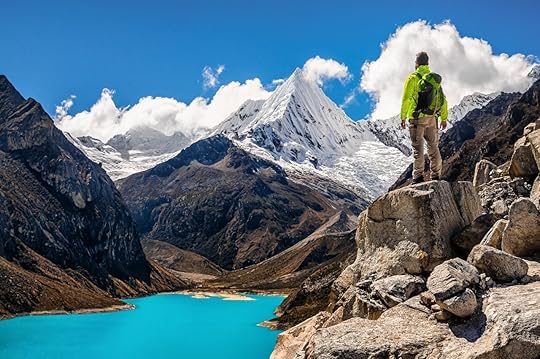
Photo: Antonio Salaverry/Shutterstock
This Andes mountain range features over a dozen peaks reaching an impressive 20,000 feet or higher and more than 700 glaciers in the region. Featuring aquamarine alpine lakes, hot springs and otherworldly flora all add to its ethereal beauty. And it’s not just for experienced climbers either. From the town of Huaraz, you can explore Huascarán National Park or head out for a smaller hike or mountain bike ride. More seasoned (and acclimatized) adventurers can also opt for multi-day treks that head deep into the mountain range if you’re feeling more adventurous.
3. Ljubljana, Slovenia
Photo: Georgios Tsichlis/Shutterstock
This small but edgy capital city in the heart of Europe is an excellent choice for you Aquarius because it’s full of curiosities at every turn. Small and winding roads hide no shortage of indie shops and alternative venues. In the lusciously green country of Slovenia with open, rolling hills; Ljubljana holds some serious charm. Located between Italy, Croatia, Austria, and Hungary, there’s no shortage of beautiful countryside to visit here. After you’ve finished with the quirky options of Ljubljana, you can head to world-famous picturesque Lake Bled or the beautiful Soča Valley for a taste of Michelin Star restaurant, Hiša Franko, featured in Netflix’s Chef’s Table.
4. Tirana, Albania
Photo: RossHelen/Shutterstock
This lesser-known European destination is the perfect place for you Aquarius because you get all the perks of a Mediterranean holiday – natural beauty and great weather – but with the added bonus of being relatively off the beaten path.
Being in Eastern Europe, Albania has an interesting hotpot of cultures mixing into it, infusing influences from the Middle East with the Balkans. After visiting the fascinating capital, Tirana, you can go to Apollonia where you’ll find the ruins of an ancient town built by the Greeks in 588 BC; and finish off with a visit to the stunning deep-water spring pool, The Blue Eye, to satiate any water cravings your water-bearer symbol may have.
5. Yachats, Oregon, US
Photo: JPL Designs/Shutterstock
The sleepy town of Yachats has a unique characteristic of being picturesquely moody all year round, with gloomy skies, dramatic coastlines, and winter cabin vibes. Its quietness will appeal to you, Aquarius, when you need to *ahem* distance yourself from other people. What’s more, the whole town is dedicated to ethically and sustainably sourced food which will appeal to your humanitarian nature! It features breathtaking scenery, tide pools, impressive forests, and the awesome sinkhole, Thor’s Well, near Cape Perpetua. This hypnotic and imposing phenomenon is an old sea cave that collapsed, creating a seemingly bottomless pit into the ocean.
6. Tiger’s Nest, Bhutan
Photo: takepicsforfun/Shutterstock
Bhutan is a Buddhist kingdom on the Himalayas full of monasteries, fortresses (or dzongs) and dramatic landscapes that range from subtropical plains to steep mountains and valleys. Paro Taktsang monastery, the Tiger’s Nest, clings to cliffs above the forested Paro Valley in mesmerizing fashion. The ability to immerse yourself into vastly different cultures, religions, and scenery is perfect for you with plenty to see, learn, and try. It’s certainly a weird and wonderful travel destination. The capital, Thimphu, is also worth visiting. It features a towering golden Buddha, fascinating architecture, and alternative activities such as their impressive national sport, archery.
7. Riga, Latvia
Photo: Georgios Tsichlis/Shutterstock
Another relatively unknown destination to add to your bucket list, this picturesque country was a traditionally Pagan country that embraced Christianity later than many of its neighbors; lending it a strong folk tradition that can be seen in the architecture, rituals, and celebrations of the locals. Riga is full of colorful, cobbled streets with buildings that look like something out of an old Brother’s Grimm fairytale. Jauniela Street is particularly charming with Art Nouveau buildings and rows of flower boxes spilling out of windows. If you want to connect to your element, visit the Aerodium wind tunnel in Sigulda and experience the feeling of flying. 
Matador Network's Blog
- Matador Network's profile
- 6 followers



